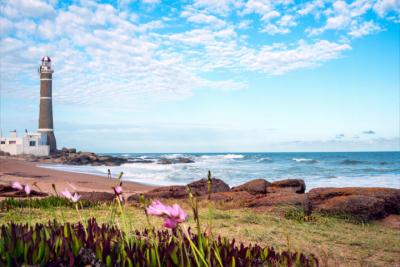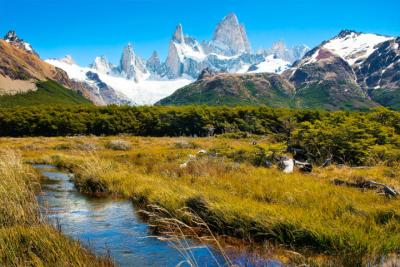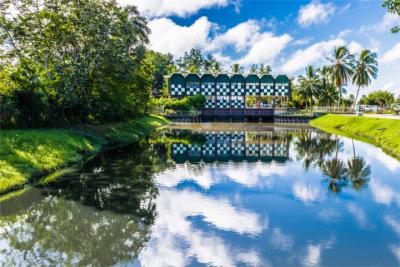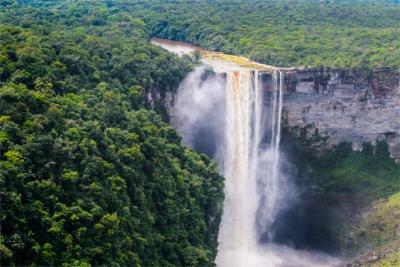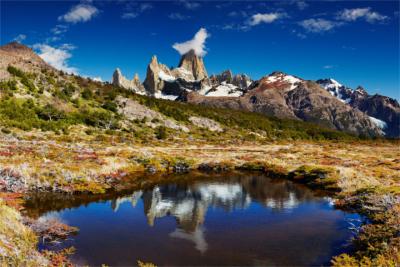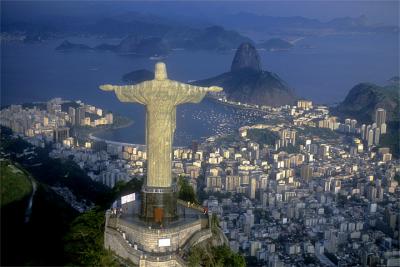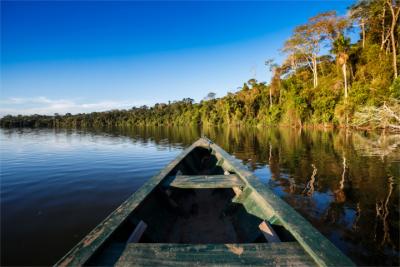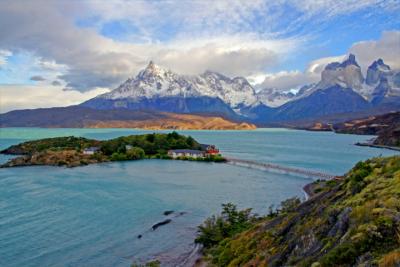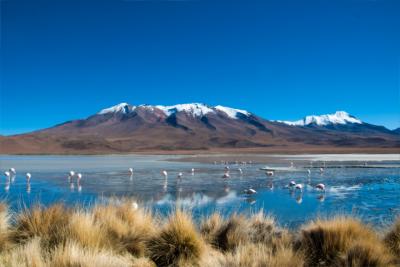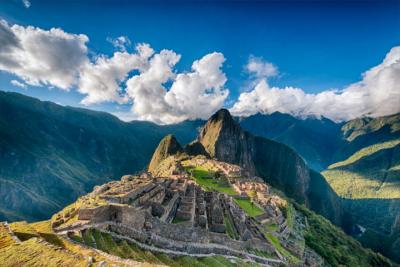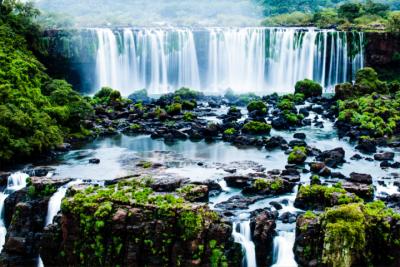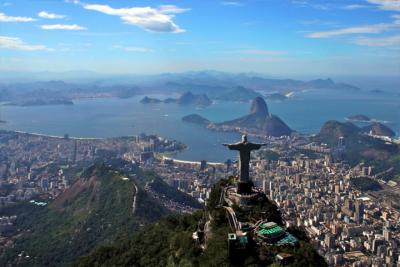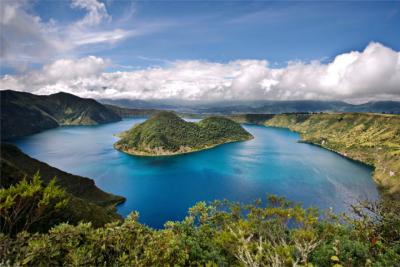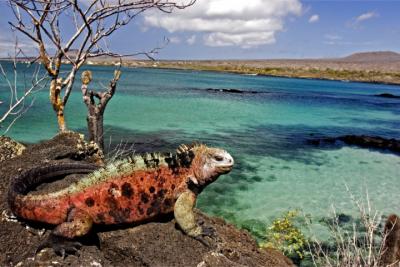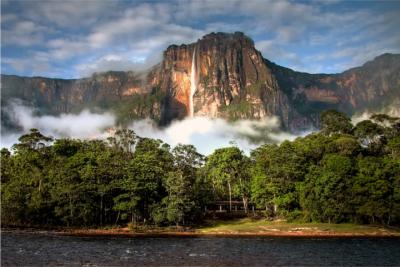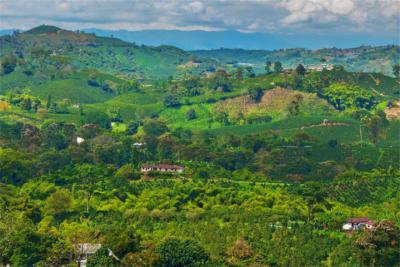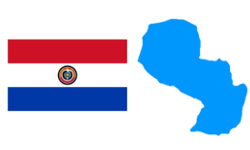Travel Offers
Travelmyne Featureprint
Distance
Paraguay – South America in its Nativeness
Paraguay is located in the middle of South America, isolated from the rest of the world. Due to its location, the country kept most of its nativeness. Landscapes like vast, harsh steppes remain unchanged. The culture, which comprises Native American and European influences, is rich in tradition and has been preserved to this day.

Geography - Gran Chaco and Oriente
Paraguay is an inland country in South America. It is enclosed by Brazil, Bolivia and Argentina. From north to south the country is crossed by the Paraguay River and divides two different landscapes. West of the river you find the barren plain Gran Chaco, which rises toward the west. East of it, the region Oriente presents a hilly, fertile landscape which is populated by 90 percent of the population. The country is dominated by subtropical climate with hot summers (December to March) and mild winters (June to September).

Nature - From vast steppes to thick forests
The landscape in the west of the country is dominated by the barren steppes of the Gran Chaco. Grassy areas alternate with savannas, which contain hardy shrubs and trees like the Quebracho tree, in this inhospitable environment. Gigantic herds of cattle browse the steppes, which are also home to jaguars, pumas, tapirs and anteaters. The landscape partly transforms into desert-like, sandy plains. Smooth hills, rivers and swampy flooded plains characterise the region Oriente in the east of the country. Fields, on which maize, sugar cane, tea, fruit and vegetables are grown, stretch for miles here. In addition, the east contains thick rainforest, which is populated by capybaras, monkeys, caimans, snakes and colourful birds.

Natural sights - Eventful expeditions through nature
You can best experience the unique landscape of the Gran Chaco in the Defensores del Chaco National Park. Vast plains of Quebracho trees, pricky shrubs and cactuses are home to pumas, jaguars, armadillos and monkeys here. The park also contains the impressive landscape Cerro Leon, which consists of several hills. You can get to know Paraguay's nature in a more thrilling way in the Eco Reserva Mbatoví: you travel through the thick forest and over lush hills by fast cable car, over suspension bridges, through a cave and climbing up rocks. It is much more relaxing to experience the country's nature while crossing the Paraguay River (for example with the MS Paraguay). A popular tourist attraction is the Ciudad del Este at the tripoint to Brazil and Argentina in the north. From there you can reach the gorge of the Paraguay River and the gigantic Iguazu Falls, which belong to Brazil and Argentina. About 275 water columns run 60 metres into the deep here. You can get close to this natural spectacle on foot or by boat. Another appealing natural sight is the salt lagoon Laguna Capitan, which measures 7,000 km². Visitors can go swimming and do water sports (surfing, sailing, water skiing) at the Ypacaraí Lake, especially in San Bernardino.

Culture - The Guaraní people and the Jesuits
For centuries the nomadic tribes of the Guaraní people trekked Paraguay. From 1535 to 1811 the country was a Spanish colony. During this time 30 Jesuit villages ("reducciones") were built, in which white people and Native Americans lived together peacefully and presented a peculiarity of Latin American culture. Later on, the country lived through a turbulent history with phases of wealth and war. The Paraguayan population preserves their dances and traditions, which play a particularly important role at celebrations. The country is also still populated by gauchos, which herd cattle and are considered to be South American cowboys.

Cultural sights - Asunción, Trinidad del Paraná and Caacupé
The capital Asunción is a great starting point on a journey through Paraguay. It has, for example, worthwhile sights such as the historical railway station with the oldest South American trains (not running any more), the Cathedral Metropolitana, the Plaza de los Héros or the Casa de la Independencia Museum. You also gain interesting insights into everyday life on a visit to the gigantic Pettirossi Market. The settlements Trinidad del Paraná and Jesus de Tavarabgue tell of the peaceful coexistence of the Jesuits and the Native Americans. The preserved ruins, including the Jesuit church in Trinidad with its bell tower, font and the sacristy, belong to the UNESCO World Cultural Heritage. Another important stop on a trip through Paraguay is the city Caacupé. Hundreds of thousands of believers pilgrimage to its church on the 8th of December every year for the celebration of the Virgin of Miracles. In the city Yaguarón you find an impressive Franciscan church made of wood, which was built in the 18th century. The Fort in Boquerón shows how fiercely Paraguay and Bolivia once battled with each other. A mighty testimony of the power of modern technology is the Itaipu Dam near Ciudad del Este, which is eight kilometres long and 200 metres high. It dams up the Paraná River and fuels the world's greatest hydroelectric plant. It is possible to visit this technical marvel, which is operated by both Paraguay and Brazil. Two times per month a train runs from Asunción to the pottery town Areguá. The historical steam engine and the entertainment by music and magicians make the journey a varied adventure.

Experience - Meeting Native Americans and gauchos
Tradition is alive all over Paraguay. It is apparent in the native everyday life of the Native Americans, for example, which you can attend in the settlement Yalve Sanga. The life of the cattle-herding gauchos is also full of time-honoured customs. Tourists can ride over the steppe with them, drive home cows or listen to guitar music at the campfire. This is possible, for example, on the cattle ranch near Villarrica. You experience how traditional woven goods are produced in San Miguel, where typical local ponchos and hammocks are created. You learn a lot about the production of the national drink Teréré on a visit to a mate tea factory. Besides this drink, the Paraguayan cuisine is characterised by parillada, grilled meat, which is often eaten with maize or manioc. The people's Latin American temperament is shown in the delight they take in celebrating. That is why there are many opportunities of diving into a world of music and dance in the evening.

Activities - Ideal for ecotourism
Its remoteness and nativeness make Paraguay the ideal destination for ecotourism. There are also tours through wild landscapes for backpackers, which include such activities as watching deer or birds. Besides hiking tours, you can explore the steppes on horseback. Especially the Paraná River near Ayolas or the scenic village Villa Florida at the Tebicuary River offer great conditions for fishing.

Information
Spanish is one of the country's official languages. Most travellers arrive in Paraguay at the airport near Asunción (ASU). Moving around by bus is practical and cheap in Paraguay. The bigger cities also offer rental cars and you can find taxis almost everywhere.
Paraguay is the ideal destination for tourists who want to explore isolated, native landscape on their own. The country is also suited for holidaymakers who want to get to know the adventurous life on an Estancia Ranch. Furthermore, Paraguay attracts lovers of culture with sights, which originated in the union of Native American and European influences.

